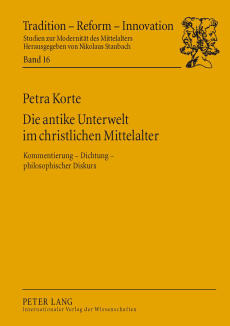The Ancient Underworld in the Christian Middle Ages

By the triumph of Christendom the cosmos of ancient mythology did not become obsolete, but lived on in the educational traditions. In this context a special kind of discourse developed concerning the infernal realm of the dead. Already in antiquity the mythology scenario with its archaic concepts of afterlife had provoked figurative philosophical or rather psychological patterns of interpretation, which are based especially on the sixth book of Vergil’s ‚Aeneid’. Mediated by the late antique comments on the ‚Aeneid’ this figurative reading was used by Carolingian men of letters to justify their interest in epic and mythological poetry. Subsequent exegetes eventually developed a genuine medieval kind of reading by giving a significance of its own to each component of the mythological infernum. Thus the ancient underworld became much more than just a poetic analogy to the Christian concept of hell, namely a universal topos for the conditio humana. The purpose of the present study is to retrace this development on the basis of poetic and paratextual documents up to its conclusion in Dante’s ‚Commedia’.
Literature: Korte, Petra, Die antike Unterwelt im christlichen Mittelalter. Kommentierung – Dichtung – philosophischer Diskurs (Tradition – Reform – Innovation, vol. 16), Frankfurt a. M. et al.: Peter Lang 2012.

